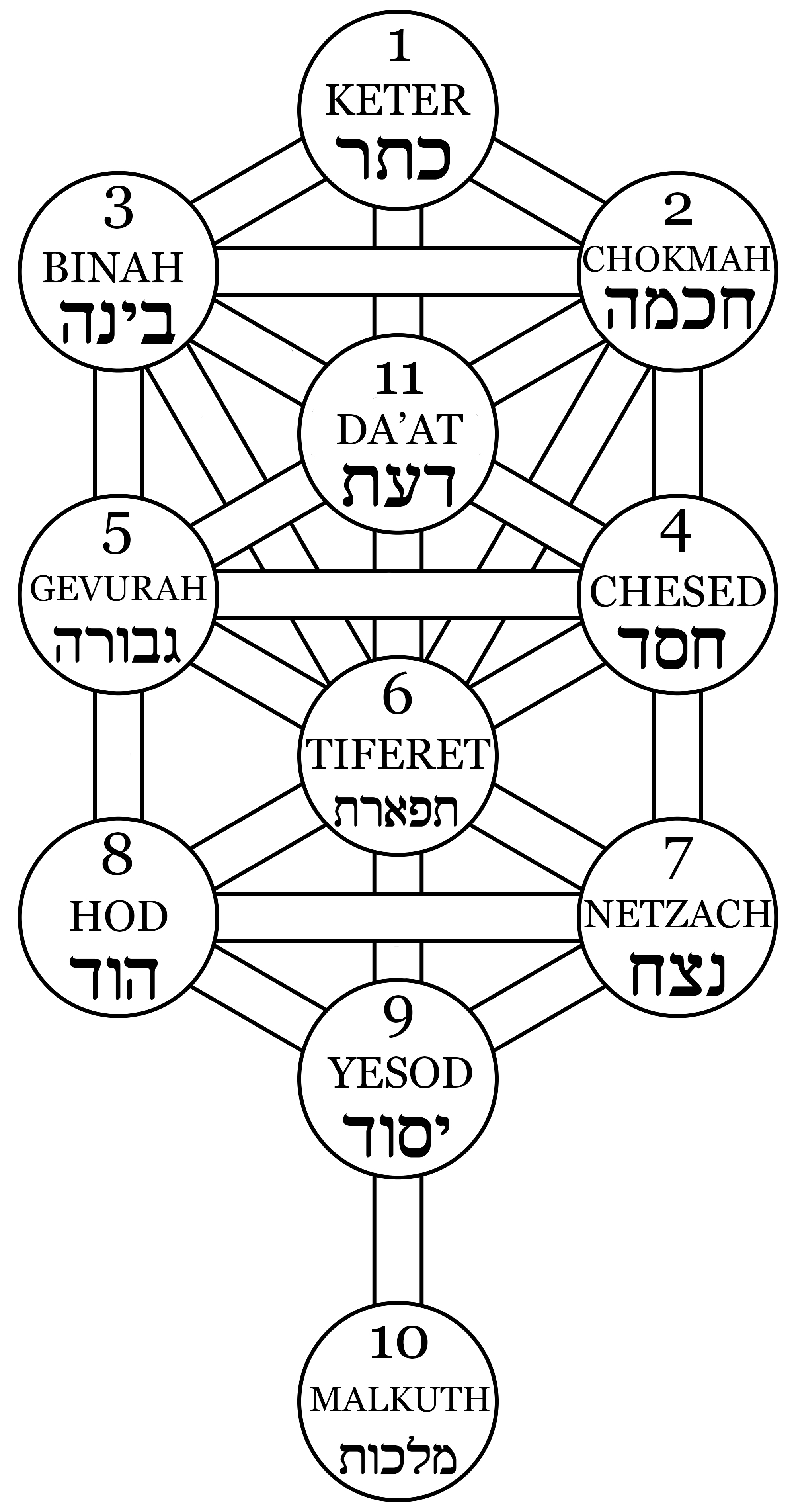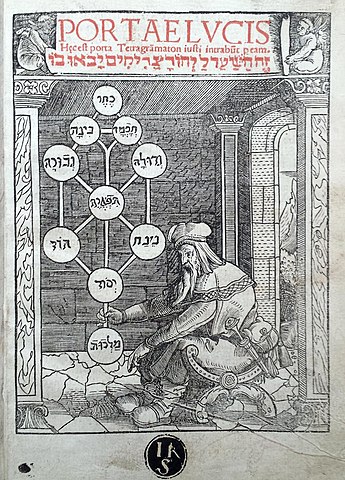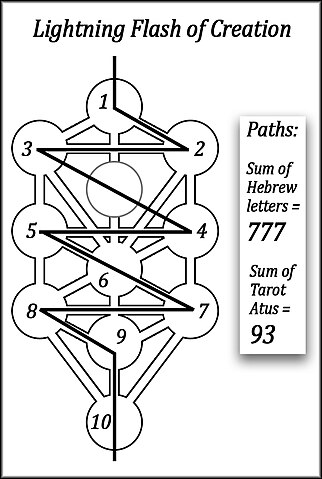Tree of Life
The tree of life is a diagram used in Rabbinical Judaism, in kabbalah, and other mystical traditions. It is usually referred to as the "kabbalistic tree of life" to distinguish it from the tree of life that appears alongside the tree of the knowledge of good and evil in the Garden of Eden creation narrative and well as the archetypal tree of life found in many cultures.
The iconic representation first appeared in print on the cover of the Latin translation of Gates of Light in the year 1516. Scholars have traced the origin of the art in the Porta Lucis cover to Johann Reuchlin. The diagram is used in several occult traditions, including Thelema and Theosophy. The spheres have become associated with deities, angels, astrology, tarot, colors, and numbers.
Description
The tree of life usually consists of 10 or 11 spheres symbolizing different archetypes (called sefirot) and 22 paths connecting the spheres.
The sefirot represent encompassing aspects of existence, God, or the human psyche, depending on the interpretation and the beliefs of any given mystical tradition. The paths connecting the spheres usually represent the relationship between the concepts ascribed to the spheres or a symbolic description of the requirements to go from one sphere to another.
The columns are symbolized as pillars which represent different kinds of moral values, electric charges, or types of ritual magic, for example, the Left-hand path, which also utilizes the evil shadows of the sefirot, the qlippoth.
The sefirot are, from top to bottom:
- Keter ("Crown")
- Chokmah ("Wisdom")
- Binah ("Understanding")
- Chesed ("Kindness")
- Gevurah ("Discipline")
- Tiferet ("Glory")
- Netzach ("Victory")
- Hod ("Splendour")
- Yesod ("Foundation")
- Malkuth ("Kingdom")
- Da'at ("Knowledge") appears in some diagrams of the tree halfway between Keter (sphere 1) and Tiferet (sphere 6).
Development of the diagram
In the year 1516, Johann Reuchlin's diagram appeared on the cover of the Paolo Riccio's Latin translation of Joseph ben Abraham Gikatilla's Gates of Light. The diagram only had 17 paths and, at the time, the concepts of 10 spheres and 22 letters were still distinct in the literature.
In 1573, a version sketched by Franciscus Zillettus appeared in Cesare Evoli, De divinis attributis. This version introduced several innovations that would reappear in later versions:
- all the spheres were of the same size
- the lines became wide paths
- the spheres were aligned into 3 distinct columns
- Malkuth was connected to three spheres
- astrological symbols for the known celestial bodies were used in conjunction with the Hebrew names to label the spheres.
Kircher's innovations
Between 1652 and 1654, Athanasius Kircher published his version of the tree in Oedipus Aegyptiacus. According to 20th-century occult writer Aleister Crowley, Kircher designed his diagram in a syncretic attempt to reconcile several distinct ideas. This heavily annotated version, self-termed "Sefirotic System," introduced more innovations:
- abstract concepts
- divine names
- the 22 Hebrew letters for each path
- new astrological symbols.
Two versions of the tree diagram are now widely circulated: one where Malkuth has 1 path, owing to Reuchlin's original; and another where Malkuth has three paths, owing to several later versions; both having 22 paths in total, corresponding each to a Hebrew letter, owing to Kircher's syncretism.
Path of the flaming sword
The path of the flaming sword refers to the flaming sword which God put to guard the Garden of Eden after Adam and Eve were cast out. It is a concept in Kabbalah which represents the order in which the ten sefirot were created. The path emanates from the Ein Sof, the boundless source of divinity, begins at Kether (the crown) and ends at Malkuth (the kingdom), where the physical world manifests, and symbolizes "the logos which unifies them."
Some occult systems teach that by following this metaphysical zig-zag path through the sefirot, a devoted magician may comprehend the structure of the universe while achieving enlightenment.
Aleister Crowley named his book of correspondences Liber 777 in recognition of the "7" shapes created by this path.
In Chabad
According to the doctrines of Orthodox Chabad, the tree of life represents a series of divine emanations of God's creation itself ex nihilo, the nature of revealed divinity, the human soul, and the spiritual path of ascent by man. In this way, Kabbalists developed the symbol into a full model of reality, using the tree to depict a map of creation.
The symbolic configuration is made of ten spiritual principles, but eleven can be shown, since Keter and Da'at are interchangeable. Kabbalists believe the tree of life to be a diagrammatic representation of the process by which the universe came into being. The tree of life speaks not only of the origins of the physical universe out of the unimaginable but also of humanity's place in it. Since man is invested with a mind, consciousness in the Kabbalah is thought of as the fruit of the physical world, through whom the original infinite energy can experience and express itself as a finite entity.
After the energy of creation has condensed into matter, it is thought to reverse its course back up the tree until it is once again united with its true nature, Keter. Thus the Kabbalist seeks to know himself and the universe as an expression of God and to make the journey of return using the stages charted by the spheres, until he has come to the realization he sought.


